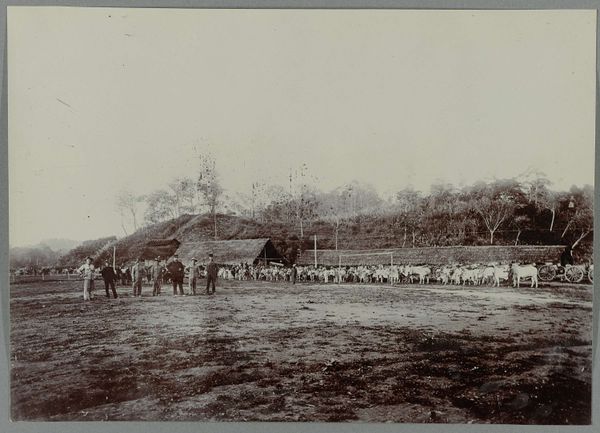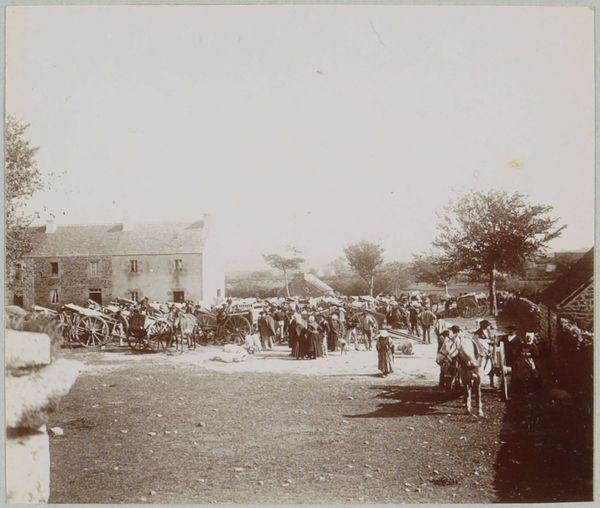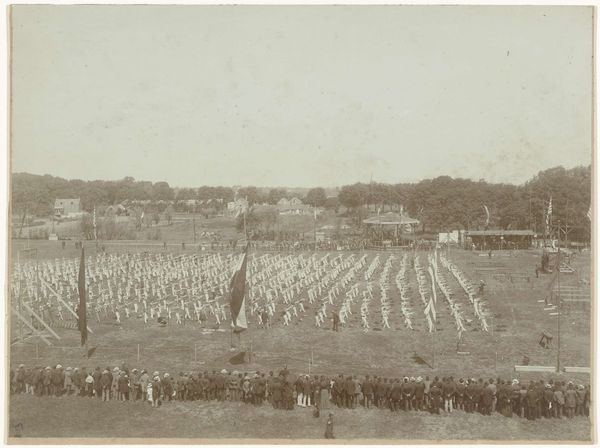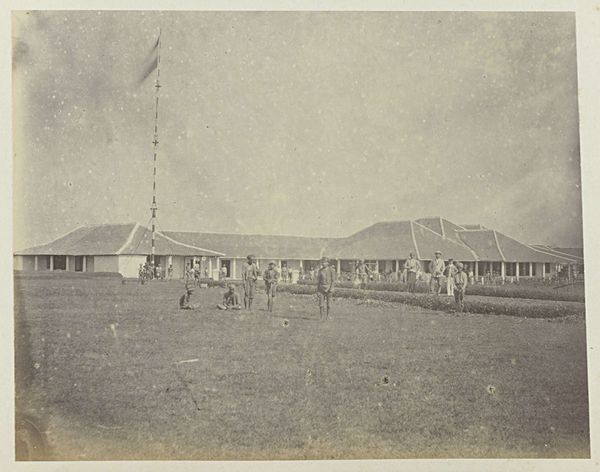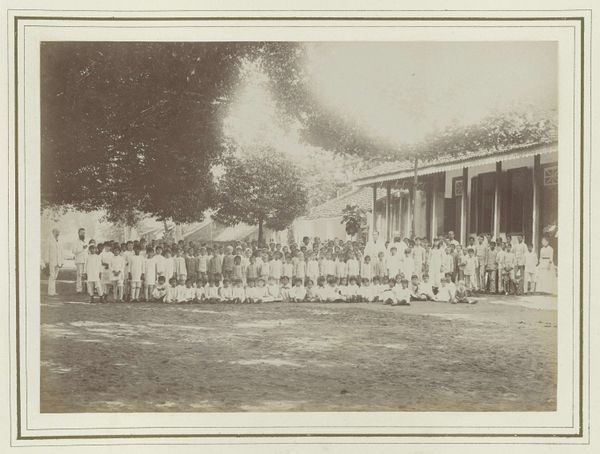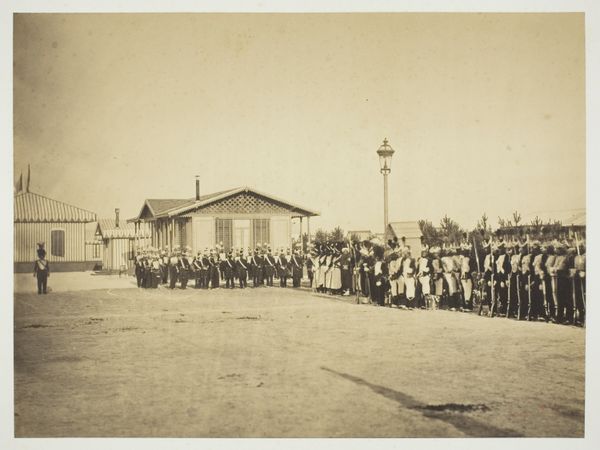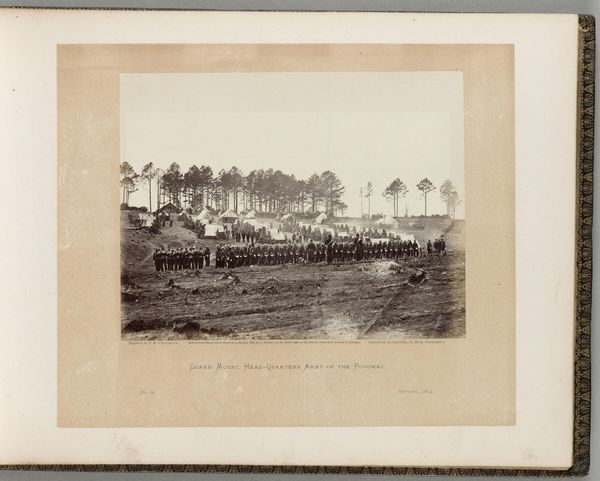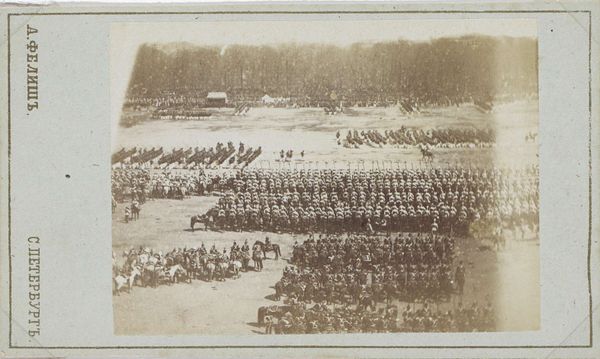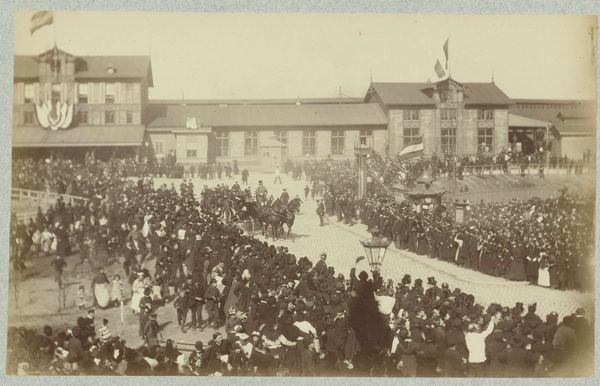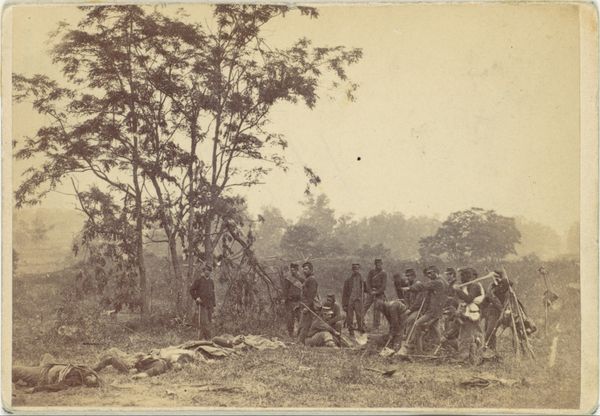
Executie van acht zogenaamde Tamboenmoordenaars in Bekasi op Java Possibly 1870 - 1878
0:00
0:00
#
light pencil work
#
natural tone
#
pencil sketch
#
charcoal drawing
#
possibly oil pastel
#
charcoal art
#
pencil drawing
#
watercolour illustration
#
watercolor
#
shadow overcast
Dimensions: height 192 mm, width 290 mm
Copyright: Rijks Museum: Open Domain
Curator: This stark image, attributed to Woodbury & Page, dating possibly from 1870 to 1878, is titled "Execution of eight so-called Tamboenmoordenaars in Bekasi on Java." It’s currently held at the Rijksmuseum. What strikes you about it initially? Editor: The scale is unsettling. The vastness of the open space sharply contrasts with the disturbing subject matter, creating this stark visual imbalance, almost a theater of death being performed for… for whom? The shadows certainly intensify that feeling. Curator: The photograph offers a particular view of colonial power, right? Notice the carefully constructed gallows; a testament to engineering and the lumber used to create it. Editor: Right, we are confronted by the mechanisms of colonial violence laid bare. The men, identified as "Tamboenmoordenaars" or "garden murderers", are positioned as objects of state-sanctioned brutality. The very act of photographing and circulating such an image speaks volumes about the power dynamics at play, silencing the colonized voice and justifying the inhumane treatment and systemic oppression. What raw materials helped perpetuate this execution? Curator: Primarily, the tools of photography, as you suggest. Think about the photographer's need for the chemicals, the glass plates for the negative, the specific lenses that helped construct this photograph, and even the darkroom required to develop the print. These items came at a price for this early image-making in Java. And then, we also should take note of the paper this photograph has been printed on. How did Woodbury & Page obtain it? Editor: Absolutely, understanding the context of how the image was made, displayed and shared within the cultural moment helps uncover those layers of colonial domination and control. This photograph becomes not just a depiction of execution but material evidence of ideological warfare. And how this technology can be repurposed. Curator: Precisely, a sobering reflection on how even art forms can be bound to oppressive systems. I leave the gallery with more to ponder. Editor: Indeed, it pushes us to engage actively, challenge prevailing narratives, and remain mindful of how these histories are constructed and weaponized.
Comments
No comments
Be the first to comment and join the conversation on the ultimate creative platform.
